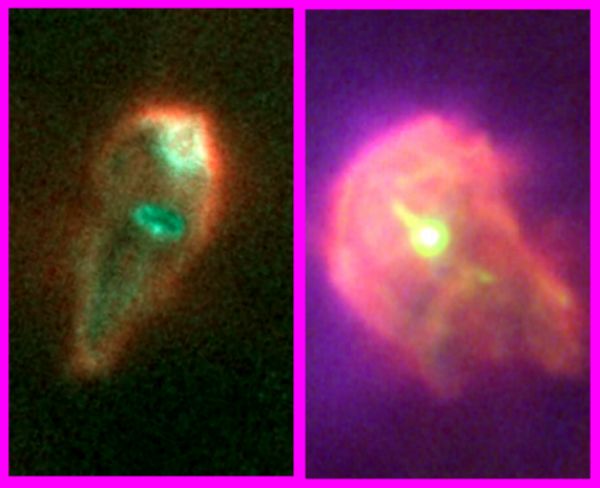
|
Explanation: The Orion Nebula is a nuturing stellar nursery filled with hot young stars and their natal clouds of gas and dust. But for planetary systems, the active star-forming region can present a hazardous and inhospitable birthplace. While the formation of dusty protoplanetary disks seems common in Orion, these Hubble Space Telescope close-up images dramatically reveal the torturous conditions they must face while trying to grow into full-fledged planetary systems. In each case, a central young star is surrounded by a disk substantially wider than our solar system. The disks likely contain material in the process of planet formation. However, withering ultraviolet radiation from one of Orion's nearby hot stars is rapidly destroying the disks -- ultimately creating the comet-shaped clouds of glowing gas seen engulfing the protoplanetary systems. Planet formation must occur quickly here, if at all. Researchers estimate that about 90 percent of Orion's youngest protoplanetary disks will not survive the next 100,000 years.
|
January February March April May June July August September October November December |
| ||||||||||||||||||||||||||||||||||||||||||||||||
NASA Web Site Statements, Warnings, and Disclaimers
NASA Official: Jay Norris. Specific rights apply.
A service of: LHEA at NASA / GSFC
& Michigan Tech. U.
Based on Astronomy Picture
Of the Day
Publications with keywords: protoplanetary disk - Orion Nebula - planet formation
Publications with words: protoplanetary disk - Orion Nebula - planet formation
See also:
